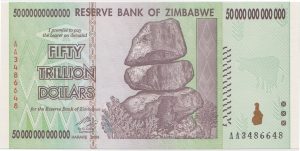Unprepared Hikers
BY Herschel SmithReaders are well aware of the typical things I recommend when going hiking, even for a day hike with no plans to spend the night. You make plans to spend the night anyway.
A large bore handgun, redundant fire starter, poncho, parka, paracord, knife, light, compass, energy food, and plenty of water (or a water filtration device), and minimalistic IFAK. This simple kit, while fairly light, gives you water, food energy, means to find your way out if you can navigate, cover for the night by use of the poncho and paracord, warmth for the night with the parka, and means to have fire.
Unprepared hikers rarely thing about these things, and often have to be rescued. Take for example these native Texans who went hiking in Colorado.
Hikers left the Texas heat to a camp on a cold, rainy Colorado trail, officials said. The duo hiked up Lake Como Road and into Colorado’s Sangre de Cristo range on Monday, June 27, the Alamosa Volunteer Search And Rescue team said. They never made it to Lake Como and set up camp about a quarter-mile from the lake.
Lake Como is an 8.3-mile out-and-back trail near Blanca, about 210 miles south of Denver. It’s considered a challenging route, according to AllTrails. After some time, they started experiencing hypothermia. They called for help and said they were cold. One of the hikers started throwing up and was severely dehydrated with a headache.
Rescuers brought the hikers hot water bottles and sugary drinks to help them warm up and rehydrate. They were brought down the road and checked by medical professionals. Nearly six hours after the call for help, the rescue was complete. Officials said it was a difficult operation because of the rain making the road rocky. “Lake Como Rd was exceptionally dangerous this trip due to heavy rain, high chance for rockfall and extremely slippery rock,” officials said in a news release. “On the descent down, there was a river running down the entire road.”
The hikers weren’t prepared for their trek. They didn’t pack extra clothing to stay dry, and their tent had no rain fly, officials said. The hikers also didn’t have extra food or water, and they didn’t have layers to survive the night temperatures. “These hikers said they did not understand why it was so cold and rainy in Colorado, because it has been ‘so hot in Texas’ where they hike all the time,” rescuers said. “They never checked any weather forecasts.”
I’ve hiked in Colorado in the middle of summer near snow covered peaks. Their actions were very dumb, and could have cost them their lives.
Perhaps worse still was this hiker who tried to brave a swamp in the Adirondacks.
NORTH HUDSON — It’s known by forest rangers as the Dix Pond Swamp, and may be one of the more miserable and foreboding places to find oneself in the Adirondack High Peaks backcountry.
Created by a “blowdown” — a mass knockdown of trees — 50 years ago and characterized by knee-deep muck, jungle-thick new-growth trees and voracious black flies, a solo hiker from Singapore earlier this month was rescued after wandering desperately and aimlessly in the swamp for three days after leaving a marked trail and becoming disoriented.“He told his wife that he was never going to hike that mountain range again,” Forest Ranger Jamison Martin said during an interview with fellow Ranger Andrew Lewis about the Wednesday, June 22, search-and-rescue effort.
For the lone hiker, whose name has been withheld to protect his privacy, the misadventure started on the evening of Sunday, June 19, after he was coming down from the Dix Range, a series of five peaks, including the towering South Dix and Grace Peaks.
That was the point at which his wife, who had been following her husband’s progress from Singapore via his uploads to the fitness tracker app Strava, lost his signal.
Used by runners and cyclists use to plot their routes, Strava worked well above timberline with clear shots to distant cell towers or satellite connections. But in the depths of Dix Pond Swamp, with heavy tree cover, there was no signal.
After not hearing from him on Monday and Tuesday, his wife called authorities who contacted the rangers.
In short order, they found his rental car, from New York City’s John F. Kennedy airport, parked at the Elk Lake parking lot, which is one of the entry points to the Dix Range.
“He signed in at the register but he didn’t sign out,” said Martin, referring to the rosters at many trailheads where hikers write down their names, phone numbers and planned destinations.
Rangers telephoned others who had signed in and out who told them that they remembered seeing a lone hiker on the trail who, as Martin described it, appeared “whupped” as he was ascending Macomb Mountain.
Knowing where he had been, where his car was and where his last Strava signal came from, the search party — which had grown to 11 people — concluded he was heading back toward Elk Lake and may have ended up in the swamp as darkness and exhaustion set in.
Rangers were keenly aware of how easily one can be turned around in the mucky thicket of trees. “Moving through that swamp is beyond slow,” Lewis said.
A State Police helicopter had been summoned, but thick clouds over the Dix Range prevented it from getting into the area.
By Wednesday afternoon, another ranger, Jason Scott, was at the swamp’s perimeter on an ATV and another ranger had entered the area on foot.
Scott made voice contact with the hiker and they made their way toward one another.
“He was drenched from head to toe,” recalled Lewis.
The man’s rain pants and hiking pants had been shredded, and the soles were coming off his hiking boots.
The Adirondack’s infamous black flies had feasted on the only exposed parts of his skin: His hands looked like white prunes from the bug bites and moisture, and “it looked like he had gotten shot in the face with a shotgun” due to bites, Martin said.
He hadn’t eaten but managed to survive by drinking swamp water.
What may be notable is that the man, who is originally from Ireland but lives in Singapore, wasn’t the stereotypical out-of-shape person that one would think is most likely to find trouble in the woods.
He’s 58 but in decent shape from cycling, officials said. And he had items like rain gear as well as a GPS device — though one he wasn’t familiar with — as well a compass.
He ended up losing those, however, possibly as he was thrashing through the swamp. “His navigation capabilities were out the window,’’ Lewis said.
Some of the details were unclear since he was hypothermic (nighttime temperatures were in the 40s) and he said he had been hallucinating, seeing houses and nonexistent trail markers.
Martin and Lewis offered a couple of takeaways: For one, being in shape from cycling or some other aerobic training doesn’t translate directly into readiness for a long backcountry hike to a place like the Dix Range. “There’s no substitute for actually doing this, for actually pounding the ground and walking the muddy trails,’’ Martin said.
And one shouldn’t enter the woods without enough supplies and gear to spend the night if required by circumstance. It also helps to bring more than, say, water and beef jerky: Hiking requires fats and protein for energy such as that found in the traditional trail mix known as GORP (good old raisins and peanuts), energy bars and possibly some Gatorade or orange juice with water for electrolytes.
Rangers have rescued ultramarathon runners who have “bonked” due to a sudden energy depletion, said Lewis.
Finally: Don’t, as too many people do, rely on a cellphone app or GPS alone for navigation. There’s no substitute for a paper map and compass when out of cell range or when the batteries die.
“People routinely write off the map and compass in favor of something that has batteries,’’ Lewis said.
Great lessons learned. Know your season. Know your terrain. Have maps. Be able to navigate. Have various foods. Have clean drinking water or filtration. If you can’t rest, you begin to hallucinate and make awful decisions.
And if you’re in a swamp, retrace your steps and get out.






